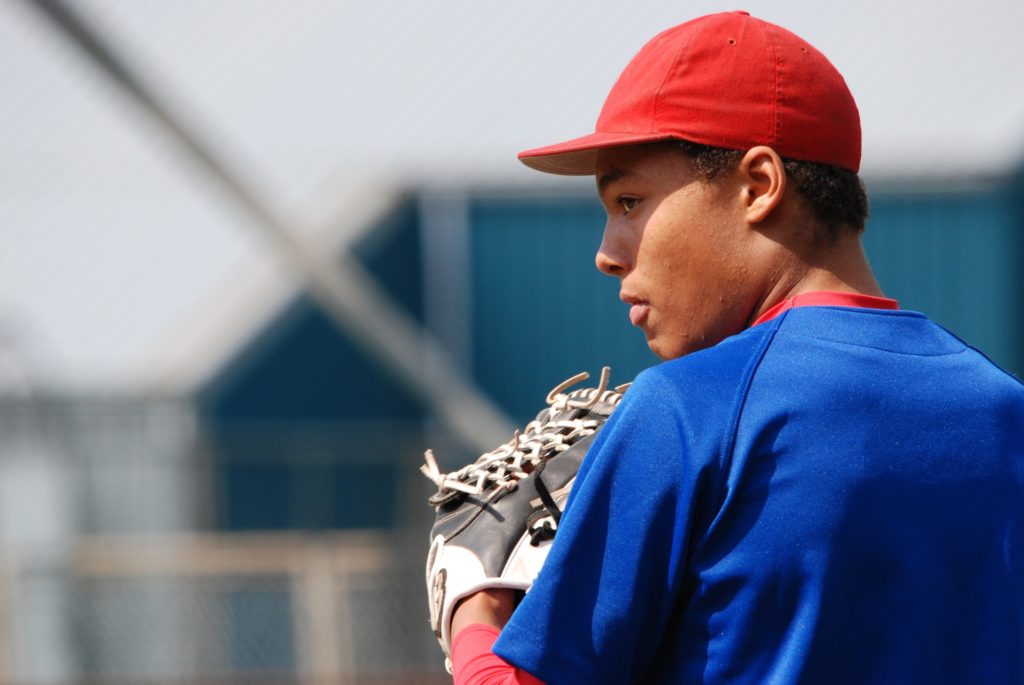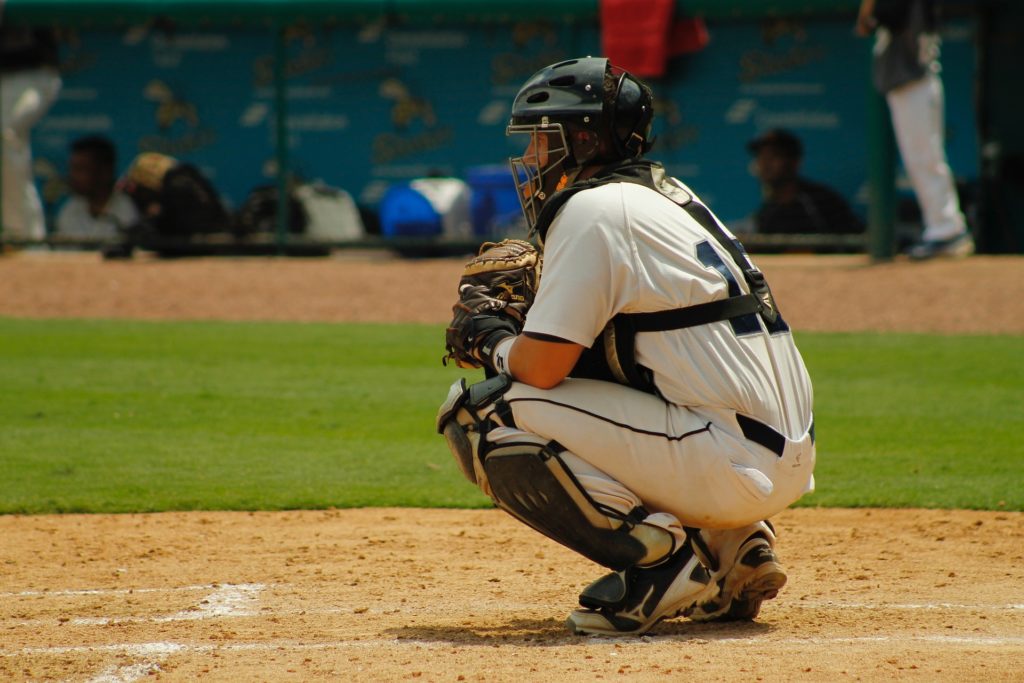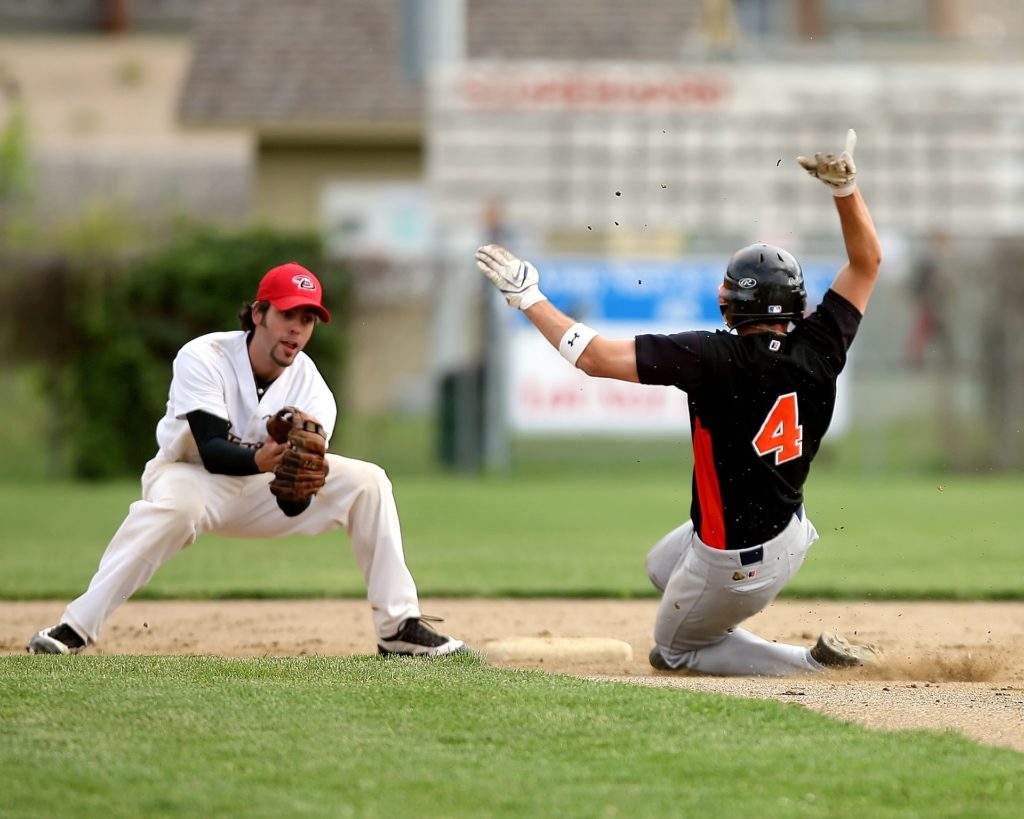“Take me out to the ball game, take me out to the crowd…” There’s more to baseball than catchy tunes and unfortunately injuries happen. In fact, more than 414,000 Americans were treated for baseball related injuries in 2010 and over two thirds of those injuries happened to people who were 18 or younger. This blog post was written to cover just a few of those injuries to help you become better informed and what, if anything, you can do to prevent injury.
Catchers:
Contrary to what you may believe, most injuries that catchers sustain are not the result of collisions at the plate. Catchers are more likely to suffer from knee injuries- due to constantly being in the squatting position. These injuries may include a torn meniscus, and sprains or strains.
A torn meniscus may be the result of a sudden forceful movement or wear and tear over time. Dr. Li will be able to diagnose and treat a tear of the meniscus. .While a tear may not be completely unavoidable there are a few things a catcher or anyone, can do to limit their risk.
- Always stretch before and after exercising
- Strengthening exercises
- Don’t twist a planted foot
- Wear proper footwear
Pitchers:
Injuries to pitchers are common in baseball- the repetitive overhead throwing motion can lead to wear and tear injuries. The most common injuries usually occur in the rotator cuff or the elbow. Some injuries include:
Labral Tears:
A labral tear can come from direct injury (falling on an outstretched hand) or from wear and tear. Pitchers are prone to labral tears because the throwing action causes the biceps tendon to pull against the labrum. Dr. Lawrence Li will be able to diagnose a labral tear through a physical examination and imaging with X-rays, Ultrasound and MRI.
Oblique Strains:
Oblique strains commonly occur in the side opposite of the pitchers throwing arm. So, a right handed pitcher will strain their left oblique. Usually an oblique strain in characterized by an initial sharp pain around the rib cage. Twisting and bending may be painful, as well as sneezing, coughing, or deep breathing. Dr. Li will be able to diagnose an oblique strain and may prescribe therapy.
Elbow Tendinitis:
Elbow tendinitis is an overuse injury that occurs in pitchers due to the high stress put on their arms. This shouldn’t be surprising since high school pitchers throw around 80-90 miles per hour and college pitchers may throw in the 90’s. Throwing an object that fast can certainly put a strain on the elbow.
Ulnar Collateral Ligament:
Pitching can test the limits of the ulnar collateral ligament and may cause injury. The UCL stabilizes the elbow during the throwing movement. In fact, the UCL is the primary stabilizer in the elbow. Throwing a baseball repetitively overhead may increase risk of a UCL sprain or injury. The injury would be assessed by Dr. Li or Rachel Maxwell, CNP using physical examination and imaging. Once the extent of injury has been determined then an appropriate treatment plan can be implemented.
Rotator Cuff Injury:
The rotator cuff is a group of muscles and tendons that form a covering around the head of your humerus and keep it in your shoulder socket. There are a few common injuries to the rotator cuff that a pitcher, or any ball player, may suffer from. A rotator cuff tear is often caused by moving the arm a certain way repeatedly, causing wear and tear to the rotator cuff.
Tendinitis is inflammation or irritation to the tendon and causes pain in the area outside the joint. You may have heard this referred to as “pitcher’s shoulder”.
There is a small fluid filled sac in the rotator cuff that helps keep it lubricated and moving slowly. This sac is called the bursa, and bursitis is what happens when the bursa becomes inflamed and irritated. All of these conditions can be diagnosed and treated by Dr. Li, who specializes in minimally invasive treatment of injuries.
Other Injuries:
Pitchers and catchers aren’t the only players who may suffer from injuries while playing baseball. Players may be injured while playing in the field or running the bases. Position players may suffer from foot or ankle injuries more than catchers or pitchers. Running the bases can pose a significant risk for knee and lower leg injuries. Sliding into a base can cause ankle sprains, foot fractures. Knee injuries can also happen when running between bases, making a sudden stop while running, landing on a flexed knee, or twisting the knee while having your feet planted.
Don’t let and injury take you out of the game and remember that it’s important to see Dr. Li as quickly as possible after an injury. The sooner you begin treatment, the sooner you’ll be back swinging for the fences.


